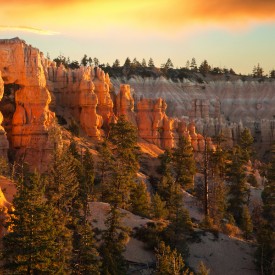Spending Package Includes Outdoor Rec Priorities

The U.S. House of Representatives voted Tuesday to pass a $1.4 trillion spending package which consists of two separate pieces of legislation, that together includes all 12 fiscal year 2020 funding bills. The Senate is expected to follow suit in the coming days, which would send the legislation to the President’s desk in an attempt to avoid the looming government shutdown set to take effect at midnight on Friday, Dec. 20.
The White House has indicated that the president is poised and ready to sign the legislation into law. The bipartisan agreement includes many positive measures and funding increases for the federal land agencies that are critical to the health and wellbeing of the RV industry.
Highlights from the 2,371-page spending package include:
- Increased funding for operations, recreation programs and deferred maintenance for federal land agencies on which RVers depend
- Continued funding for the Outdoor Recreation Satellite Account (ORSA) to update the annual statistics on the impact of the outdoor recreation on the economy
- Department of Labor workforce and apprenticeship grants
- Land and water conservation funding of $495.1 million – its highest level in more than 15 years
- Increased investment in broadband internet access in rural America
- Reauthorization of the Federal Lands Recreation Enhancement Act to Oct. 1, 2021
- Level funding for the Centennial Challenge Program at $20 million
- Increased funding for the Nationally Significant Federal Lands and Tribal Projects Program to address large transportation projects in our national parks, tribal lands and other public lands
- A step forward for a critical Government Accountability Office (GAO) study on outdoor recreation funding
The GAO study, which was a priority ask from the Outdoor Recreation Roundtable (ORR), would be a big win for the outdoor recreation community. A recent government report confirmed that outdoor recreation is an economic powerhouse that accounts for 2.2 percent of U.S. GDP, supports 5.2 million jobs and has an economic output of $778 billion.
This study will help answer if tax dollars and user fees from recreation is being reinvested back into this growing industry. It also will present federal spending information for these programs, so we can have a clear picture of what levels the government has historically funded outdoor recreation programs and if we’re receiving our fair share of the pie.
This report also will bolster advocacy efforts on Capitol Hill and within the Administration as RVIA works to promote outdoor recreation policy and address the $20 billion of backlog maintenance on federal lands.

